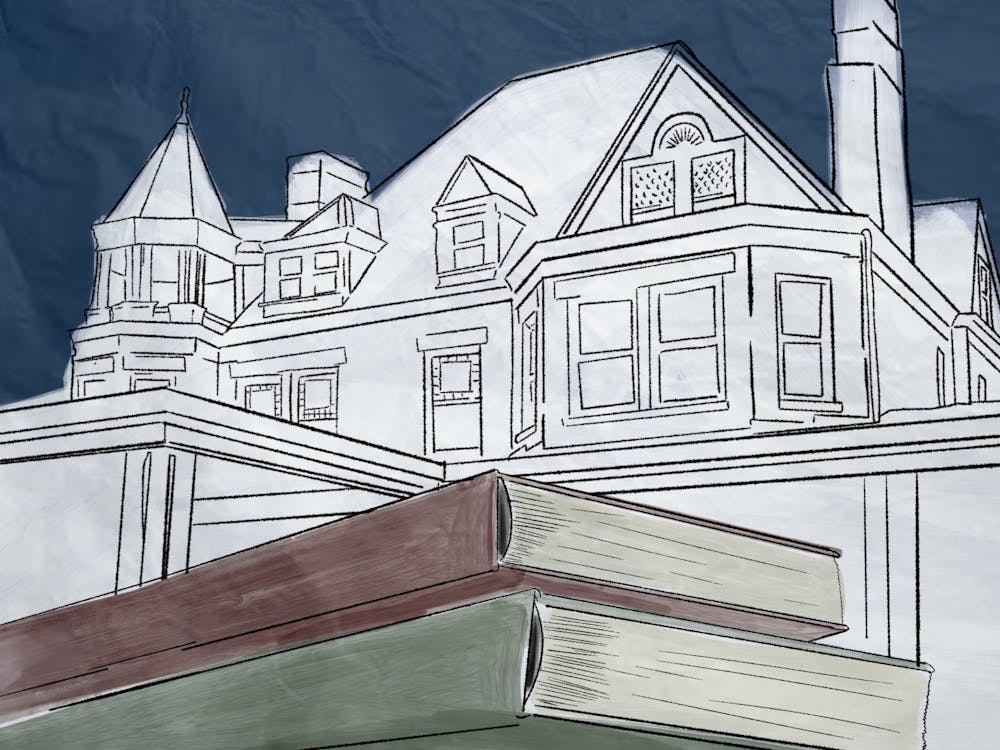Paul Graham, a British photographer currently living and working in New York City, recently spoke at the University about his past 12 years of work, consisting of three different series — “American Night,” “A Shimmer of Possibility” and “The Present” — which collectively comprise the publication “The Whiteness of the Whale.”
Despite a lack of formal arts education, Graham’s use of color in the early 1980s helped revolutionize modern photography.
“I’m just a regular person who goes out into the world and takes pictures,” Graham said at the lecture.
In his view, the core of photography is engaging life through images as it happens, as opposed to choreographing and carefully planning out images. This “wonderful dance between artist and life,” as Graham called it, encourages others to recognize the importance of the peripheral details often overlooked.
In “The Whiteness of the Whale,” each series incorporates issues of race and inequality to help demonstrate the beauty of the mundane world.
“American Night” makes a bold impact with the first images: overexposed, bleached, as if the viewer has just exited a dark building into the blinding sunlight. It also alludes to a “willful blindness” and an ignoring of marginalized groups.
The whiteness suggests a life drained of opportunity, to figures fading away and being forgotten. All the images include at least one, barely perceptible figure, either hidden or so far in the distance they may not even be there at all. Many stare directly at the viewer, issuing a challenge, or a plea.
Complementing the white images are darker photos, which reveal people pushed into shadows, though always with bits of sunlight attempting to illuminate them.
The series creates a dialogue between city landscapes and oblivious suburbia.
Suburbia includes towering mansions and gleaming new cars in full color and sunlight, a dramatic division between communities. A bright red roof stands out against the brilliant blue sky, an epitome of seemingly utopian life. Pristine, multistoried brick buildings contrast sharply with the city’s dull, crumbling bricks of alleyways and homes. The suburbian color generates a false happiness, an unfounded statement of superiority over the muted, yet more genuine, city scenes.
“A Shimmer of Possibility” is a collection of 12 books containing different storylines consisting of various photos taken only seconds apart. Like “American Night,” it reflects marginalized groups, though more subtly. It shows people in a different light: interesting and pensive, going along with life despite their hardships. It focuses on capturing the “whole moment rather than a partial selection of a moment,” according to Graham, because a photographer can’t, in Graham’s eyes, sum up the entire moment in a single shot.
Graham prefers to capture a broader range of time and space to show life’s “unexpected angles and heights.” Over the course of six photos, he showed a man selling roses on the street; these include the man himself, shots of the roses, his scratched hands and eyes cast up and down.
The final series, “The Present,” includes pairs of images that differ only in slight shifts in focus, imitating real life consciousness. Numerous accidental shots often characterize Graham’s best works, because his art centers around genuine, spontaneous renditions of life. For instance, a woman tripping and falling would be completely unstaged and unmanipulated. In another photo pair, a man in suit and tie is replaced perfectly in the second image by a similar-looking man in rags.
Despite tackling more serious themes, Graham creates a unique juxtaposition of tragedy and beauty. Through aperture, shutter and focus, Graham has crafted bodies of work to expose the significance of pain, isolation and the ordinary. Opposing images, often adjacent, highlight that even during difficult times there are still sunsets, sunrises and individuals filled with hope.
There does not have to be extraordinary meaning in everything; people can simply exist.





